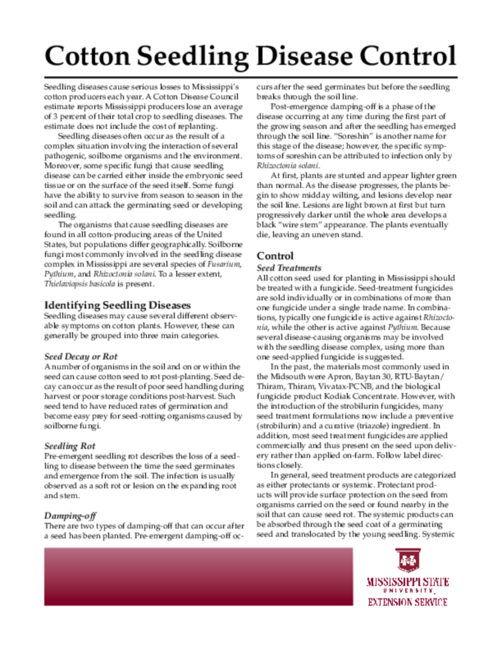P0802
Cotton Seedling Disease Control
Seedling diseases cause serious losses to Mississippi’s cotton producers each year. A Cotton Disease Council estimate reports Mississippi producers lose an average of 3 percent of their total crop to seedling diseases. The estimate does not include the cost of replanting.
Seedling diseases often occur as the result of a complex situation involving the interaction of several pathogenic, soilborne organisms and the environment. Moreover, some specific fungi that cause seedling disease can be carried either inside the embryonic seed tissue or on the surface of the seed itself. Some fungi have the ability to survive from season to season in the soil and can attack the germinating seed or developing seedling.
The organisms that cause seedling diseases are found in all cotton-producing areas of the United States, but populations differ geographically. Soilborne fungi most commonly involved in the seedling disease complex in Mississippi are several species of Fusarium, Pythium, and Rhizoctonia solani. To a lesser extent, Thielaviopsis basicola is present.
Download the entire publication (PDF) above.
The Mississippi State University Extension Service is working to ensure all web content is accessible to all users. If you need assistance accessing any of our content, please email the webteam or call 662-325-2262.
